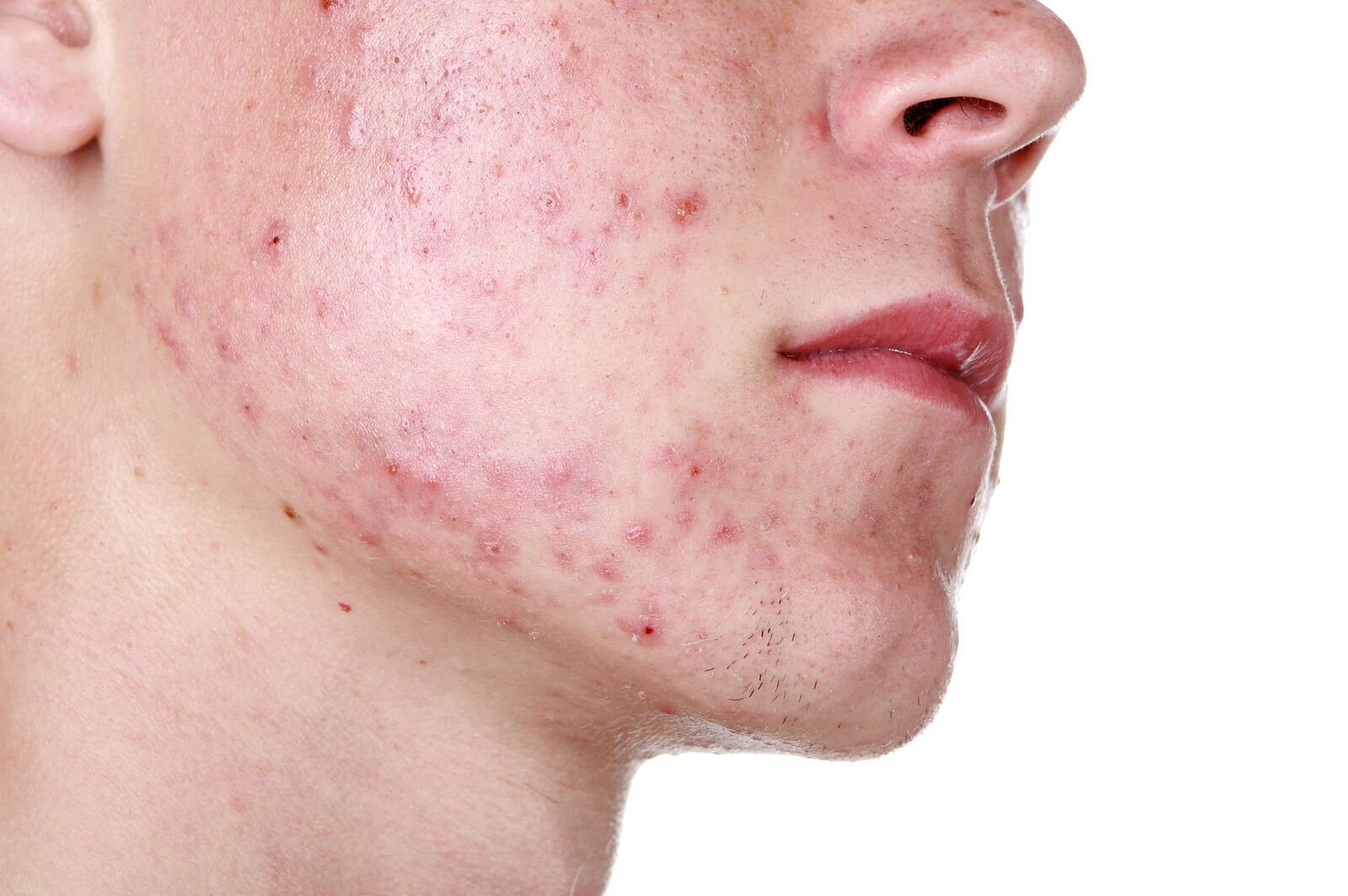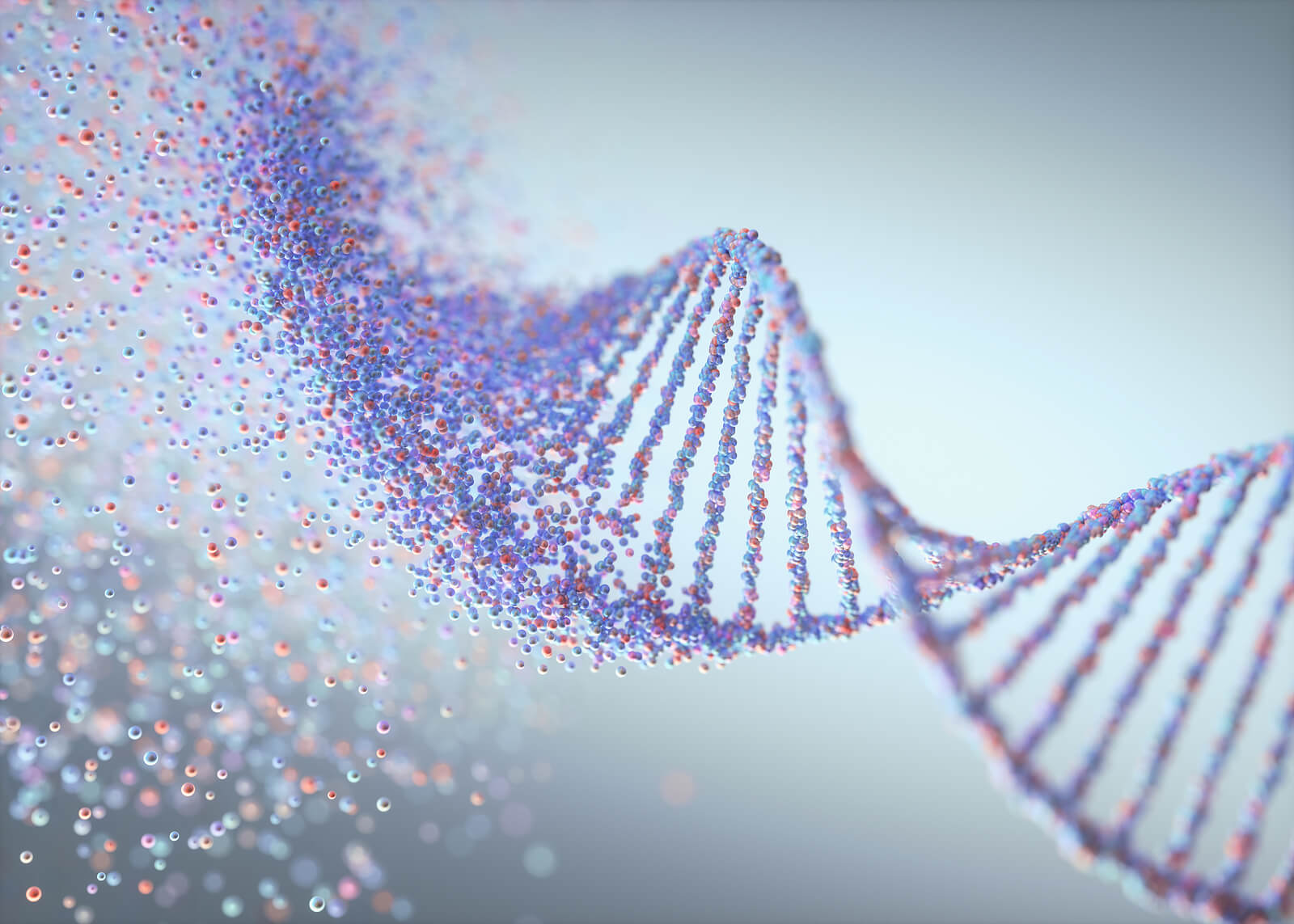Causes and Risk Factors of Polycystic Ovary Syndrome

One of the endocrine disorders that most frequently affects women of reproductive age is the so-called polycystic ovary syndrome (PCOS), also known as polycystic ovarian disease. In fact, it affects between 5 and 10% of women globally, according to Dr. JoAnn V. Pinkerton and a wide variety of authors.
One of its main characteristics is that it affects far more than what we could call its “first focus” – the ovaries. This means that, even though it appears to affect the ovaries, in reality, several parts and systems of the body are involved.
It’s true that it causes cysts in the ovaries (which are fluid-filled vesicles), but polycystic ovary syndrome isn’t a disease of the ovaries as such. It is, in fact, an endocrine and metabolic disorder.
Symptoms of the syndrome vary from woman to woman. As different research points out, its appearance may be conditioned by environmental factors and also genetic inheritance itself. Thus, although many women with PCOS have cysts on the ovaries, others don’t. This also poses considerable difficulties when making the diagnosis.
So, what actually causes this syndrome? Is it possible to identify one or more causes? Let’s take a look.
Common causes
Despite the fact that much research has been carried out to learn more about polycystic ovary syndrome, its etiology still remains unclear. For this reason, experts often state that “PCOS is likely to be the result of a combination of causes, including genetic and environmental factors.”
Hormones

The following hypotheses have been put forward on the influence of hormonal activity on the appearance of this syndrome in women:
- A change in the production of androgens (male hormones) in the ovaries could be one of the underlying causes of polycystic ovary syndrome. Thus, having higher levels of androgens than estrogens (female hormones) seems to be a plausible trigger for the syndrome.
- It has also been suggested that, during fetal development, certain genetic or chemical changes, and exposure to androgens could induce effects similar to those produced by polycystic ovary syndrome.
Insulin
In addition to the above causes, it has been observed that polycystic ovary syndrome could be a consequence of problems with insulin. The latter doesn’t only help regulate glucose levels, but also those of androgens and other hormones (such as luteinizing and anti-Müllerian hormone).
The MSD Manual explains that “in many women with PCOS, the cells of the body resist the effects of insulin (a process called insulin resistance, or sometimes prediabetes).”
Genetics

As has been observed in numerous investigations, many of the women diagnosed with polycystic ovary syndrome have a family history of the condition (from their mother, aunt, sisters, cousins etc). However, as tests don’t allow us to determine this with precision, for the time being, this is still just another hypothesis.
Risk factors
As a high number of overweight women have been diagnosed with PCOS, obesity has often been identified as a risk factor. This is because obesity produces an increase in fat tissue which, in turn, is associated with an excessive production of androgens in the body.
However, it’s important to note that there are also women with a normal body weight (according to their body mass index) who are diagnosed with PCOS. Therefore, obesity isn’t always a determining factor.
It also seems that women who have an irregular menstrual cycle are more likely to suffer from polycystic ovary syndrome. Again, this has been linked to disturbances in androgen production.
In addition to all the above, some experts consider that the woman’s lifestyle also influences the appearance of the syndrome. A sedentary lifestyle, a poor diet and a high level of stress could be the most notable factors in this regard.
If you consider that you meet several of the causes and risk factors mentioned above, don’t hesitate to consult with your gynecologist as soon as possible. In this way, you won’t only be able to clear up any questions you may have, but you’ll also receive the most appropriate guidelines so that you can start taking better care of your health.
Of course, it never hurts to try to adopt (and maintain over time) a healthy lifestyle!
One of the endocrine disorders that most frequently affects women of reproductive age is the so-called polycystic ovary syndrome (PCOS), also known as polycystic ovarian disease. In fact, it affects between 5 and 10% of women globally, according to Dr. JoAnn V. Pinkerton and a wide variety of authors.
One of its main characteristics is that it affects far more than what we could call its “first focus” – the ovaries. This means that, even though it appears to affect the ovaries, in reality, several parts and systems of the body are involved.
It’s true that it causes cysts in the ovaries (which are fluid-filled vesicles), but polycystic ovary syndrome isn’t a disease of the ovaries as such. It is, in fact, an endocrine and metabolic disorder.
Symptoms of the syndrome vary from woman to woman. As different research points out, its appearance may be conditioned by environmental factors and also genetic inheritance itself. Thus, although many women with PCOS have cysts on the ovaries, others don’t. This also poses considerable difficulties when making the diagnosis.
So, what actually causes this syndrome? Is it possible to identify one or more causes? Let’s take a look.
Common causes
Despite the fact that much research has been carried out to learn more about polycystic ovary syndrome, its etiology still remains unclear. For this reason, experts often state that “PCOS is likely to be the result of a combination of causes, including genetic and environmental factors.”
Hormones

The following hypotheses have been put forward on the influence of hormonal activity on the appearance of this syndrome in women:
- A change in the production of androgens (male hormones) in the ovaries could be one of the underlying causes of polycystic ovary syndrome. Thus, having higher levels of androgens than estrogens (female hormones) seems to be a plausible trigger for the syndrome.
- It has also been suggested that, during fetal development, certain genetic or chemical changes, and exposure to androgens could induce effects similar to those produced by polycystic ovary syndrome.
Insulin
In addition to the above causes, it has been observed that polycystic ovary syndrome could be a consequence of problems with insulin. The latter doesn’t only help regulate glucose levels, but also those of androgens and other hormones (such as luteinizing and anti-Müllerian hormone).
The MSD Manual explains that “in many women with PCOS, the cells of the body resist the effects of insulin (a process called insulin resistance, or sometimes prediabetes).”
Genetics

As has been observed in numerous investigations, many of the women diagnosed with polycystic ovary syndrome have a family history of the condition (from their mother, aunt, sisters, cousins etc). However, as tests don’t allow us to determine this with precision, for the time being, this is still just another hypothesis.
Risk factors
As a high number of overweight women have been diagnosed with PCOS, obesity has often been identified as a risk factor. This is because obesity produces an increase in fat tissue which, in turn, is associated with an excessive production of androgens in the body.
However, it’s important to note that there are also women with a normal body weight (according to their body mass index) who are diagnosed with PCOS. Therefore, obesity isn’t always a determining factor.
It also seems that women who have an irregular menstrual cycle are more likely to suffer from polycystic ovary syndrome. Again, this has been linked to disturbances in androgen production.
In addition to all the above, some experts consider that the woman’s lifestyle also influences the appearance of the syndrome. A sedentary lifestyle, a poor diet and a high level of stress could be the most notable factors in this regard.
If you consider that you meet several of the causes and risk factors mentioned above, don’t hesitate to consult with your gynecologist as soon as possible. In this way, you won’t only be able to clear up any questions you may have, but you’ll also receive the most appropriate guidelines so that you can start taking better care of your health.
Of course, it never hurts to try to adopt (and maintain over time) a healthy lifestyle!
- Abbot, DH., Nicol, LE., Levine, JE., Xu, N., Goordazi, MO., Dumesic, DA. Nonhuman primate models of polycystic ovary syndrome. Mol Cell Endocrinol. 2013; 373: 21-8.
- “Síndrome de Ovario Poliquístico | Oficina Para La Salud de La Mujer.” n.d. Accessed June 5, 2021. https://espanol.womenshealth.gov/a-z-topics/polycystic-ovary-syndrome.
-
“Síndrome de Ovario Poliquístico.” n.d. Rady Children’s Hospital-San Diego. Accessed June 5, 2021. https://www.rchsd.org/health-articles/sndrome-de-ovario-poliqustico/.
-
Pinkerton, JoAnn V. 2019. “Síndrome Del Ovario Poliquístico.” Manual MSD Versión Para Público General. 2019. https://www.msdmanuals.com/es/hogar/salud-femenina/trastornos-menstruales-y-sangrados-vaginales-anómalos/síndrome-del-ovario-poliquístico.
- Prapas N, Karkanaki A, Prapas I, Kalogiannidis I, Katsikis I, Panidis D. Genetics of polycystic ovary syndrome. Hippokratia. 2009 Oct;13(4):216-23. PMID: 20011085; PMCID: PMC2776334.
-
Teresa Sir, P., R. Jessica Preisler, and N. Amiram Magendzo. 2013. “Síndrome de Ovario Poliquístico. Diagnóstico y Manejo.” Revista Médica Clínica Las Condes 24 (5): 818–26. https://doi.org/10.1016/s0716-8640(13)70229-3.
-
Tirado, Del Castillo, Javier, Francisco, Antonio Jesús Ortega, Martínez, and Rosa Ana Del Castillo Tirado. 2014. “Guía de Práctica Clínica de Síndrome de Ovario Poliquístico.” IMedPub Journals: Archivos de Medicina 10 (2:3). https://doi.org/10.3823/1216.
Este texto se ofrece únicamente con propósitos informativos y no reemplaza la consulta con un profesional. Ante dudas, consulta a tu especialista.







